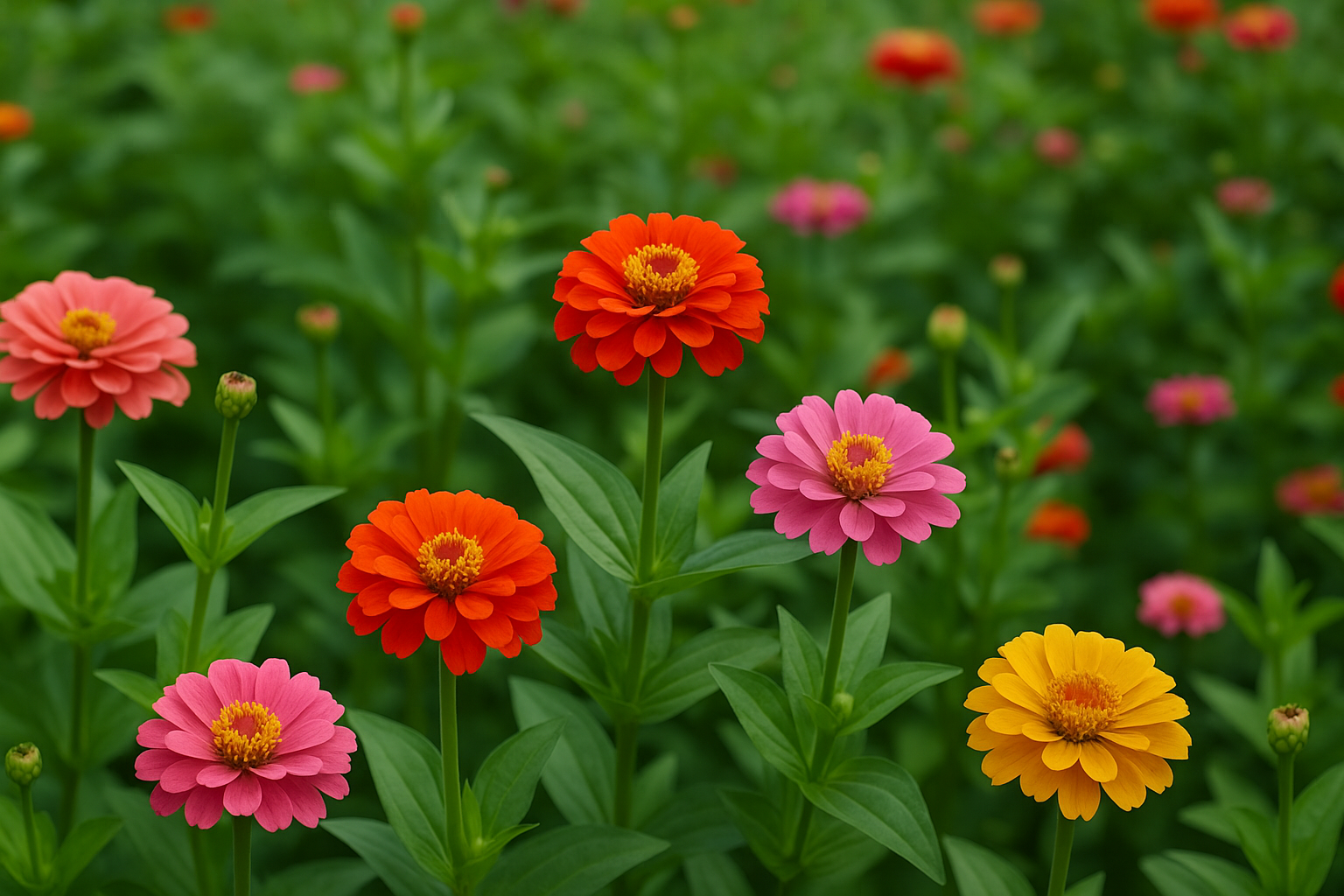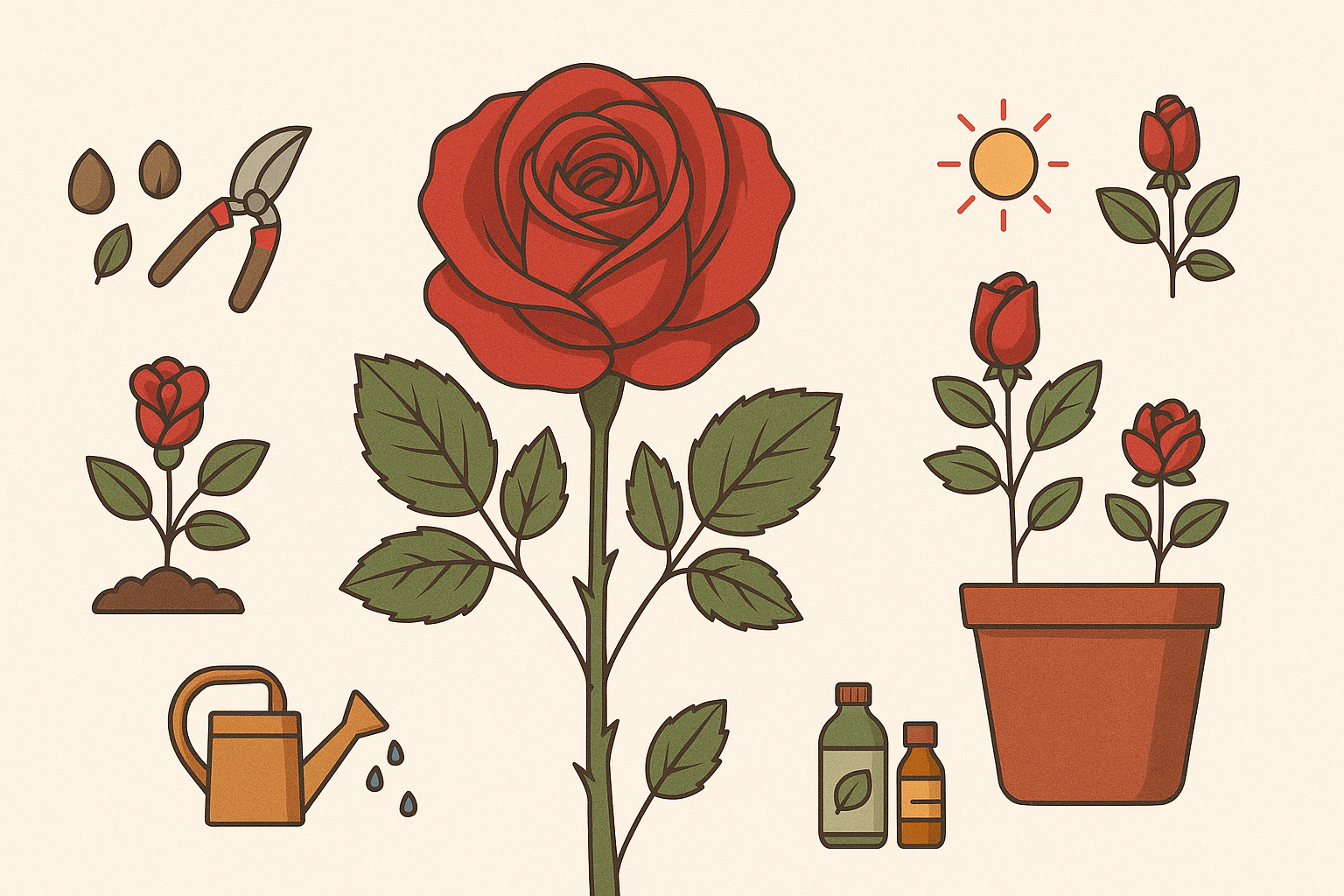Zinnias are vibrant, easy-to-grow annuals that bring a splash of color to gardens year-round, thriving in temperatures ranging from 5°C to 40°C. With over 21 varieties and approximately 12 color options, these flowers are a favorite among gardeners worldwide. Primarily propagated through seeds, zinnias can also be grown from cuttings, making them versatile for various gardening practices.
🌱 Introduction to Zinnias
Zinnias belong to the Asteraceae family and are native to Mexico and the southwestern United States. Their popularity stems from their bright, daisy-like flowers and ease of cultivation. Zinnias are annuals, completing their life cycle in one growing season, but their ability to self-seed allows them to return year after year in favorable conditions.Wikipedia
🌼 Varieties and Colors
There are 21 recognized species of zinnias, with numerous cultivars offering a range of flower forms, including single, semi-double, and double blooms. Colors span the spectrum, featuring shades of red, pink, orange, yellow, white, and even green. Notable varieties include:
- Zinnia elegans: Known for its large, showy blooms.
- Zinnia angustifolia: Features smaller, more delicate flowers and is more resistant to powdery mildew.
- Profusion Series: A hybrid known for disease resistance and prolific blooming.
🌿 Propagation Methods
From Seeds
Zinnias are most commonly grown from seeds.
- Seed Starting Mix: Use a well-draining medium. A recommended mix is:
- 1 part vermicompost
- 1 part well-dried cow dung compost
- Sowing: Plant seeds ¼ inch deep. Keep the soil moist but not waterlogged. Germination typically occurs within 5-10 days.
- Transplanting:
- After 15 days, transplant seedlings into 3-inch pots.
- Another 15 days later, move them to 6 or 8-inch pots using a mix of 30% compost and 70% garden soil.
From Cuttings
While less common, zinnias can be propagated from cuttings:
- Cutting Selection: Choose a healthy stem and cut a 4-6 inch section.
- Rooting: Place the cutting in water or a moist rooting medium.
- Transplanting: Once roots develop, transplant into soil.
☀️ Optimal Growing Conditions
- Sunlight: Zinnias thrive in full sun, requiring at least 6 hours of direct sunlight daily.
- Soil: Prefer well-draining, fertile soil with a neutral pH.
- Watering: Keep the soil consistently moist, especially during germination and early growth stages. Mature plants are somewhat drought-tolerant but benefit from regular watering.
🐛 Pest and Disease Management
Whiteflies and Leaf Curl Disease
Whiteflies are a common pest that can transmit viruses, leading to leaf curl disease. To manage:
- Insecticide Application: Use imidacloprid or a related insecticide at a concentration of 1 ml per liter of water. Apply every 15 days.
Fungal Diseases
Zinnias are susceptible to fungal infections like powdery mildew. To prevent and treat:
- Fungicide Use: Apply a suitable fungicide as per the manufacturer’s instructions.
- Cultural Practices: Ensure good air circulation and avoid overhead watering to reduce humidity around plants.
🌸 Fertilization and Nutrient Management
For robust growth and vibrant blooms:YouTube
- Balanced Fertilizer: Apply a balanced NPK fertilizer (e.g., 10-10-10) every 15 days.
- Micronutrients: Incorporate micronutrient supplements to address any deficiencies.
✂️ Maintenance Tips
- Deadheading: Regularly remove spent flowers to encourage continuous blooming.
- Pruning: Pinch back young plants to promote bushier growth.
- Spacing: Ensure adequate spacing between plants to facilitate air circulation and reduce disease risk.The Spruce
❌ Common Mistakes to Avoid
- Overwatering: Can lead to root rot and fungal diseases.
- Overcrowding: Increases humidity and disease susceptibility.
- Neglecting Pest Control: Delays in addressing infestations can lead to significant damage.
❓ FAQs on Growing and Caring for Zinnias
Q1: Can zinnias grow indoors?
A: Yes, with sufficient light. Place them near a south-facing window or under grow lights.
Q2: How long do zinnias bloom?
A: Zinnias bloom from late spring until the first frost.
Q3: Are zinnias deer-resistant?
A: While not deer-proof, zinnias are less palatable to deer compared to other plants.
Q4: Can I save zinnia seeds for next year?
A: Yes. Allow flowers to dry on the plant, then collect and store seeds in a cool, dry place.
Q5: Do zinnias attract pollinators?
A: Absolutely. Zinnias are known to attract bees, butterflies, and hummingbirds.









Leave a Reply